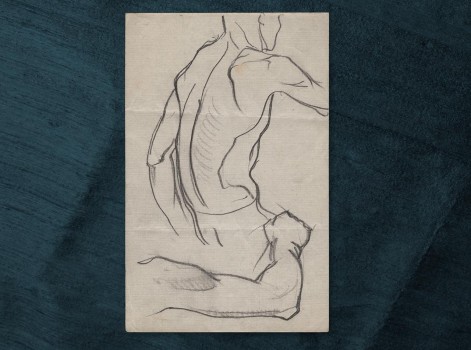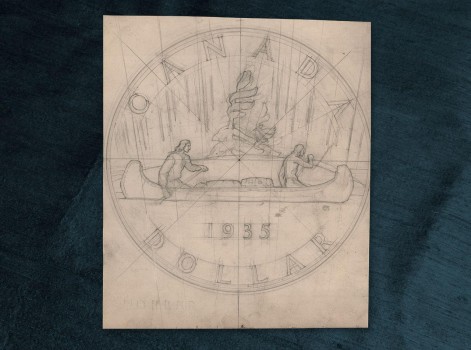Coin designs of Emanuel Hahn
An Emanuel Hahn First World War memorial design in Lindsay, Ontario. (Wikimedia Commons, Richard BH, Hamilton, ON)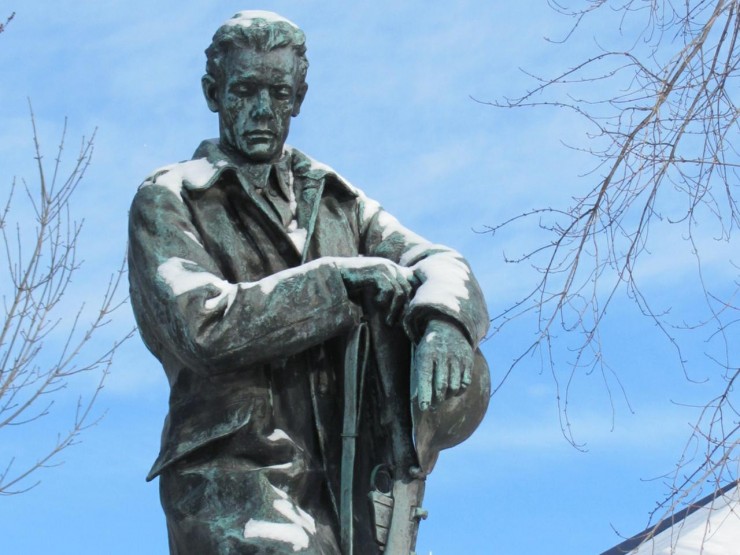
Emanuel Hahn was a celebrated Canadian sculptor whose work can be seen in the monuments of many Canadian cities. Born in Germany in 1881, Hahn immigrated to Canada with his family at the age of 7. Along with medals and a number of significant war memorials, Hahn designed some of Canada’s most distinctive and iconic coins. The voyageur silver dollar, the Bluenose dime, the caribou 25 cent piece and the 1939 silver dollar commemorating the Royal Visit of King George VI and Queen Elizabeth were all Hahn designs.
Pencil drawing by Emanuel Hahn sketching features proposed for the back of the 1935 silver dollar. 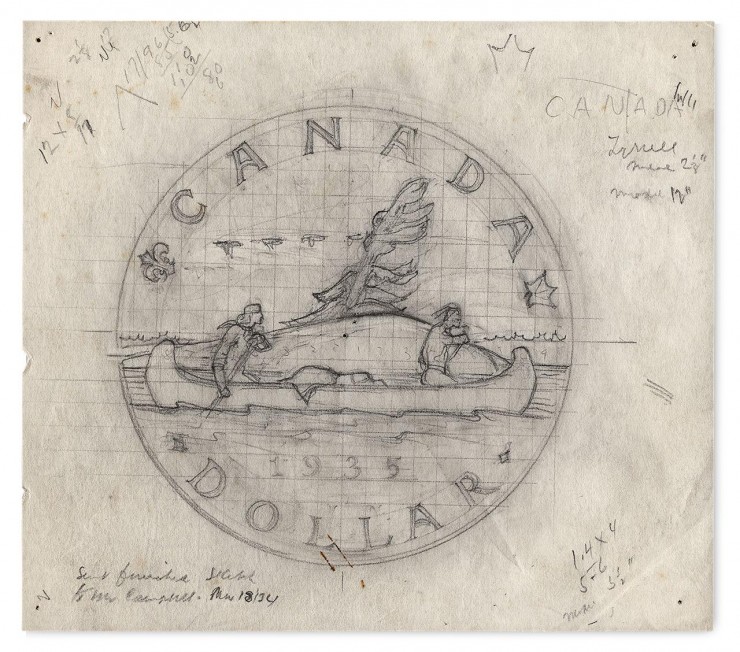
(NCC 1963.059.015.004)
In 1934 the Department of Finance invited Emanuel Hahn to submit a design for a silver dollar commemorating the silver jubilee of the reign of King George V. Hahn corresponded with the Royal Mint in London and the Royal Canadian Mint to gain insight into the process of minting a coin before submitting a drawing depicting a voyageur and a First Nations man paddling a canoe. To ensure accuracy, Hahn studied the designs of traditional canoes and the paintings of Frances Anne Hopkins. Hahn’s design was approved with only a few minor changes and was used as the standard pattern for the Canadian silver dollar until the introduction of the ‘Loonie’ in 1987.
Following the success of the voyageur silver dollar, Hahn was among several artists invited to submit designs for new Canadian coinage to be released in conjunction with the accession of King George VI, in 1937. Hahn produced no less than 16 sketches. His caribou (proposed for both the nickel and the quarter) and his Bluenose were both selected for the new coins. All of the designs put into circulation in 1937 are still to be found on Canada’s circulating coinage today. Hahn left an impressive mark on Canadian currency and all Canadians can be proud to have a ‘Hahn original’ in their pockets.
Reverse of 1935 silver dollar designed by Emanuel Hahn. 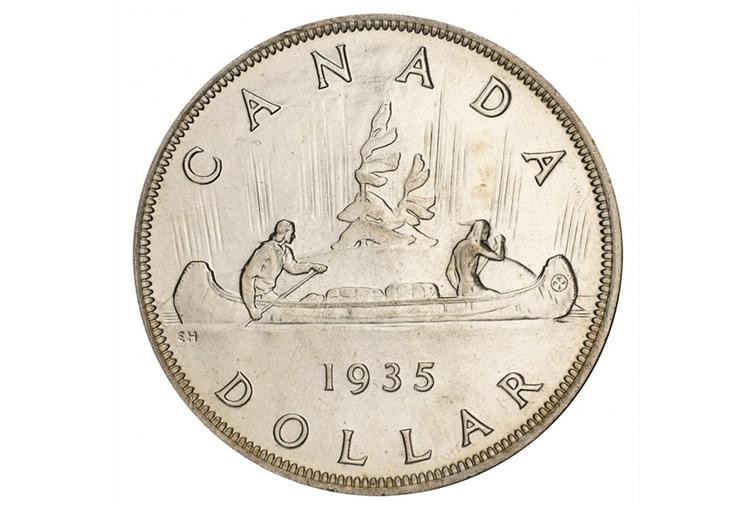
(NCC 1978.058.285b1)
Emanuel Hahn’s legacy of coins, drawings, plaster models and correspondence is preserved in the National Currency Collection of the Bank of Canada.
The Museum Blog
The Story Behind the Engraving
By: Graham Iddon
The men on the back of this bill were part of a small community of families, a summer hunting camp called Aulatsiivik on Baffin Island.
If I Had a Million Dollars…I’d Be Reasonably Well Off
By: Graham Iddon
When the Barenaked Ladies released “If I Had a $1,000,000,” they could have considered themselves reasonably rich. And today? Well, there’s this inflation thing…
Johnson’s Counterfeits
By: David Bergeron
Johnson’s entire family, two girls and five boys, was involved in the counterfeiting operation: dad made the plates, the daughters forged the signatures and the boys were learning to be engravers.
The Reluctant Bank Note
By: Graham Iddon
Among 1975 $50 bill’s various design proposals were three images, three thematic colours and even three printing methods.
Nominating an Icon for the Next $5 Bank Note
By: Graham Iddon
Using a Bank of Canada Museum lesson plan, nearly 200 students told us who they thought should be the bank NOTE-able Canadian on our new $5 bill.
The “Streak of Rust” and the King of Newfoundland
By: David Bergeron
Reid was on the verge of ruin, yet insisted on continuing railway construction. Suffering huge losses, and with no credit or cash resources, Reid issued wage notes to pay his employees.
Retired Cash
By: Graham Iddon
In January 2021, 17 of our old bank notes will lose their legal tender status—what does that mean?
The Fisher, the Photographer and the Five
By: Graham Iddon
There’s little doubt that the BCP45 is lovingly preserved today partly thanks to being immortalized on this beautiful blue five-dollar bill.
Where Futurists Feared to Tread
By: Graham Iddon
Among the laser pistols, hover cars and androids of science fiction, there’s an elderly elephant in the room: money.
Wrap-up, 2019
By: Graham Iddon
The Bank of Canada Museum set some very ambitious goals at the end of 2018. We have managed to achieve more in one year than we had since we opened in 2017.
